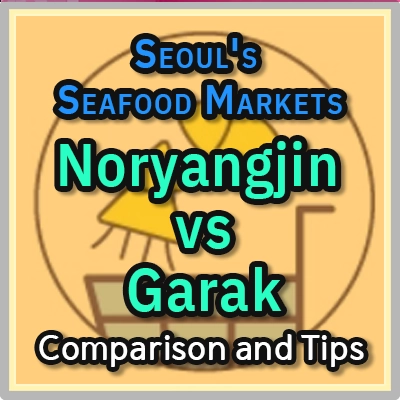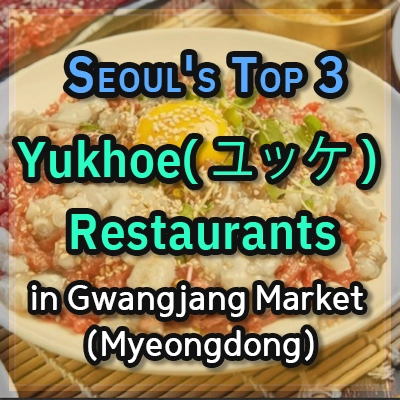Korean Winter Cuisine: 5 Must-Try Dishes (Dec-Feb)& Restaurant Recommendations
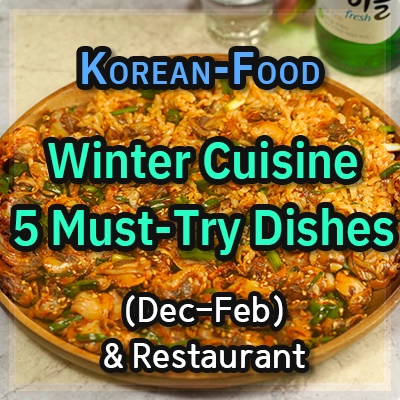
Winter in Korea casts a spell of enchantment as frost adorns the landscape and a crisp chill fills the air. It’s a season of warmth found in steaming bowls of hearty soups and comforting stews, where the rich flavors of Korean winter cuisine truly shine. From soul-warming classics to seasonal specialties, winter dishes offer a tantalizing glimpse into Korea’s culinary heritage.
As the temperatures drop, Koreans seek solace in the comforting embrace of their favorite winter delicacies. From savory stews to sizzling grilled meats, each dish is crafted to ward off the winter chill and invigorate the senses. Let’s embark on a culinary adventure to discover five quintessential Korean winter dishes, complete with restaurant recommendations to ensure an unforgettable dining experience during your visit to Korea.
⭐ Must-Try Korean Winter Cuisine: 5 Delightful Dishes
1. Gul bossam & Gul jeon (Oyster Wraps & Oyster Pancakes)
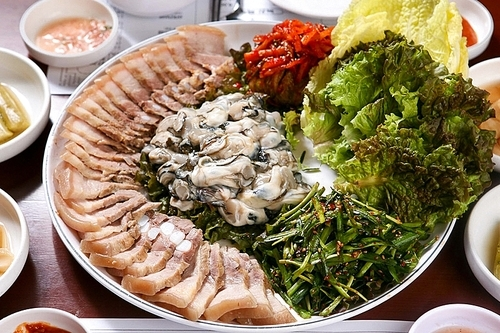
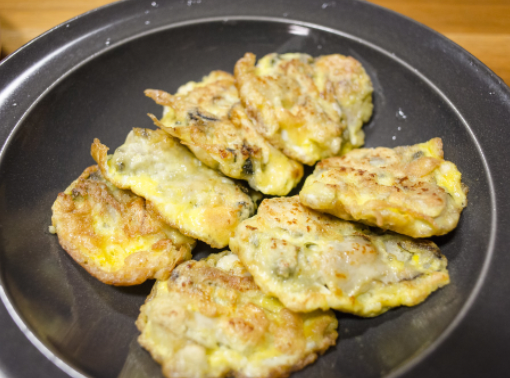
Celebrate the abundance of winter seafood with two iconic dishes: oyster wraps and oyster pancakes, each offering a delightful taste of the sea. Oyster wraps feature fresh, succulent oysters paired with thinly sliced pork belly, all wrapped in crisp lettuce leaves and served with a sweet and spicy dipping sauce. This dish showcases the harmony of fresh vegetables, tender meat, and briny oysters, creating a quintessential winter flavor experience.
Meanwhile, oyster pancakes delight the palate with their crispy exterior and tender, savory interior. Made by battering flour, eggs, and oysters, each bite offers a satisfying crunch and a burst of juicy oyster flavor. Served with soy sauce and pickled onions, oyster pancakes promise to leave a lasting impression as a beloved winter delicacy.
2. Bangeo hoe (Raw Amberjack Sashimi)
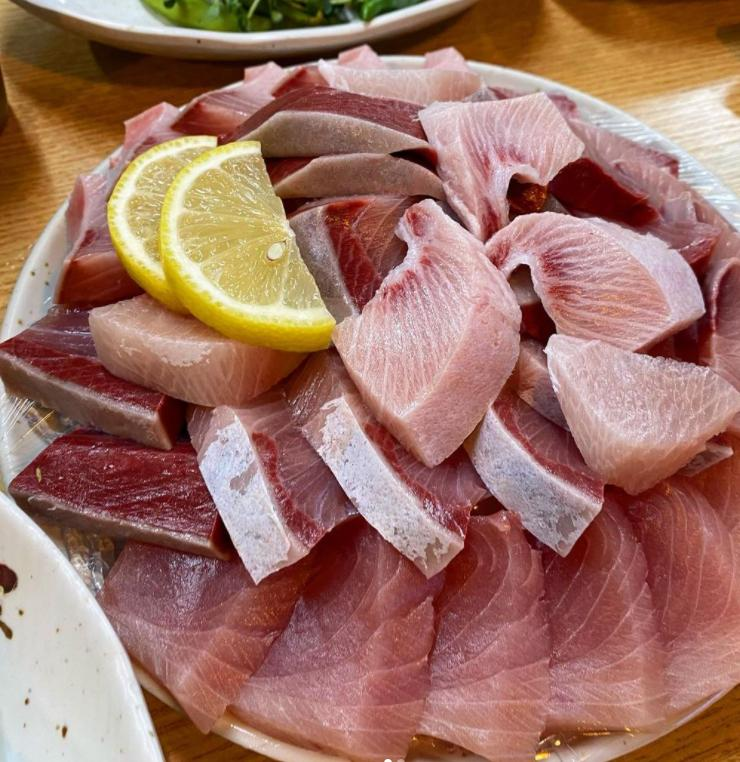
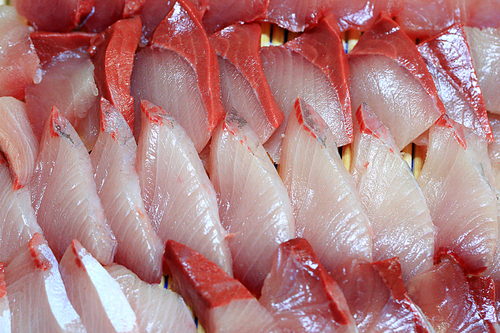
In the winter season, the most sought-after fish at seafood markets is undoubtedly the “amberjack.” With its plump, well-marbled flesh, amberjack rivals tuna in richness and flavor, melting in your mouth with every bite.
In Korea, there are several ways to enjoy sashimi. Some prefer dipping it in soy sauce and wasabi for a kick of flavor, while others enjoy it with a sprinkle of salt in fragrant sesame oil. Another popular method involves wrapping the sashimi in lettuce or perilla leaves, adding thinly sliced garlic, and drizzling it with a sauce called “ssamjang.”
If you want to taste the most affordable and freshest amberjack in Seoul, I recommend visiting the “Noryangjin Fish Market.” Check out the post below for more details about the market
Seoul’s Seafood Markets: Noryangjin Market vs Garak Market – A Comparison and Tips
In Seoul, the two most prominent seafood markets are Noryangjin Fisheries Wholesale Market and Garak Market. Unlike the bustling traditional markets, these two places are primarily wholesale hubs, which can make them somewhat less accessible to foreigners.
3. Gwamegi (Dried Herring)
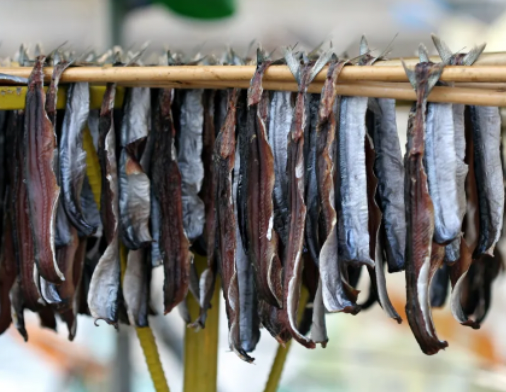
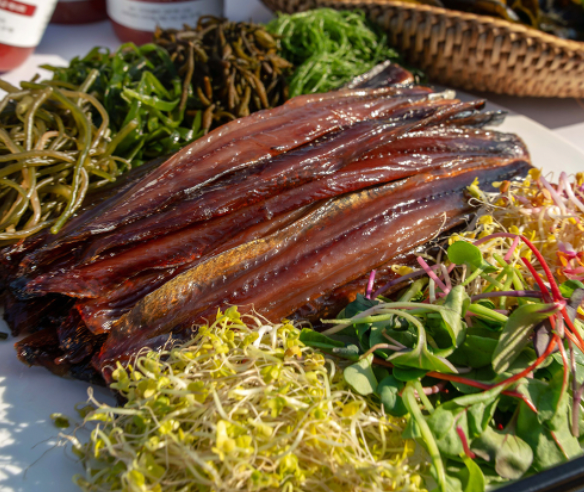
When winter arrives, Koreans always think of Gwamegi. Gwamegi refers to fish, such as mackerel or Korean herring, that are repeatedly frozen and thawed in nature, then dried in the winter wind. You might think that such a food exists only in Korea.
By freezing and thawing the fish repeatedly, it becomes slightly dried with natural oils rising to the surface, resulting in a soft yet chewy texture that is highly enjoyable. However, this food can become very pungent and inedible if it’s not made from fresh fish. It’s important to choose fish that are plump and firm, with a glossy exterior, to ensure quality Gwamegi.
The traditional way to enjoy Gwamegi is to dip it in spicy sauce-based dipping sauce and accompany it with various seaweeds, garlic, and green onions. This creates a rich and fresh flavor. Alternatively, you can wrap Gwamegi in seaweed or perilla leaves for a clean and refreshing taste.
4. Kkomak Bibimbap & Kkomak muchim (Spicy Cockle Bibimbap & Cockle Salad)
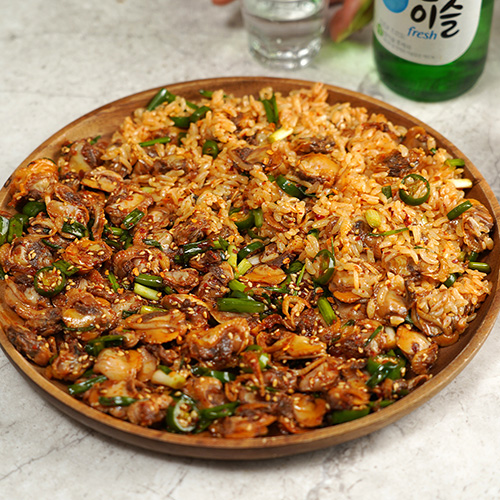
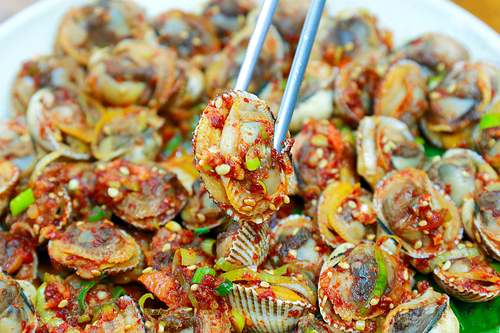
Experience the vibrant flavors of the sea with ‘Kkomak Bibimbap (spicy cockle bibimbap)’ and ‘Kkomak muchim (cockle salad)’, two dishes that showcase the versatility of cockles in Korean cuisine. ‘Kkomak Bibimbap’ features a colorful medley of fresh vegetables, tender cockles, and spicy gochujang sauce, all served atop a bed of steamed rice. Mix everything together to create a symphony of flavors and textures that dance on the palate.
For a lighter option, ‘Kkomak muchim’ offers a refreshing salad made with blanched cockles, crisp vegetables, and a tangy dressing. The briny sweetness of the cockles pairs perfectly with the zesty flavors of the dressing, resulting in a dish that is both light and satisfying.
5. Agwi jjim (Spicy Braised Monkfish)
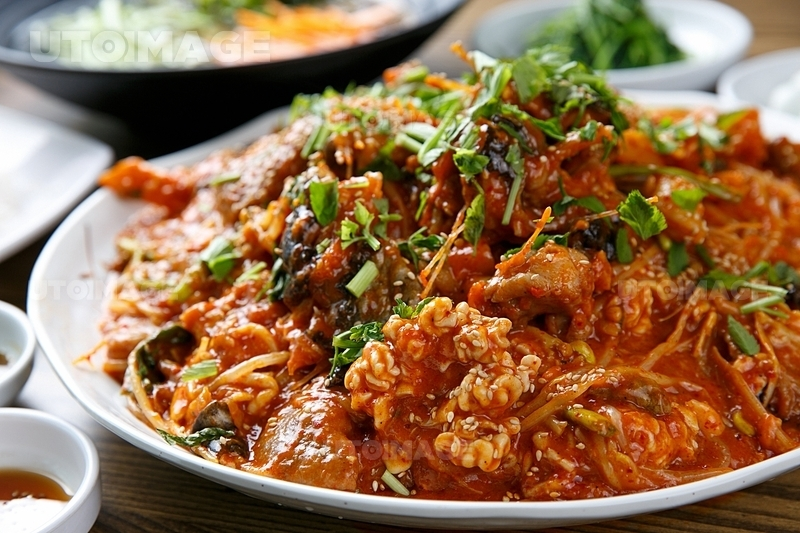
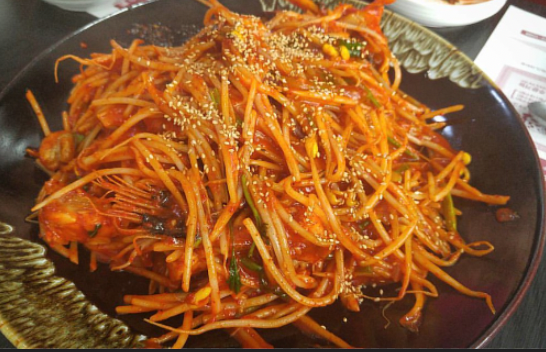
Embark on a journey through the robust flavors of winter with ‘Agwi jjim’, a spicy braised monkfish dish guaranteed to warm you from the inside out. Despite its unattractive appearance—legend has it that fishermen used to discard it due to its ugliness—monkfish becomes a culinary gem during the winter months, capturing the taste buds with its rich flavors. (In recent times, it has become quite expensive and is considered a luxury dish.) Monkfish is prized for its lean meat, abundant protein, and high collagen content in its skin, making it particularly popular among women.
‘Agwi jjim’ features firm and fresh monkfish, cut into chunks and braised in a spicy marinade along with ingredients such as Fish roe, milt, stalked sea squirt. Additionally, the dish is topped with layers of bean sprouts, which soak up the flavorful sauce, enhancing the overall taste experience. ‘Agwi jjim’ establishments can be categorized into those using frozen fish and those using fresh fish. I recommend visiting places that use fresh monkfish, even if it’s a bit pricier, to truly enjoy the exquisite flavors of winter without compromise.
🌟 Winter Cuisine Restaurant recommendations
1. Janggun Gul bossam
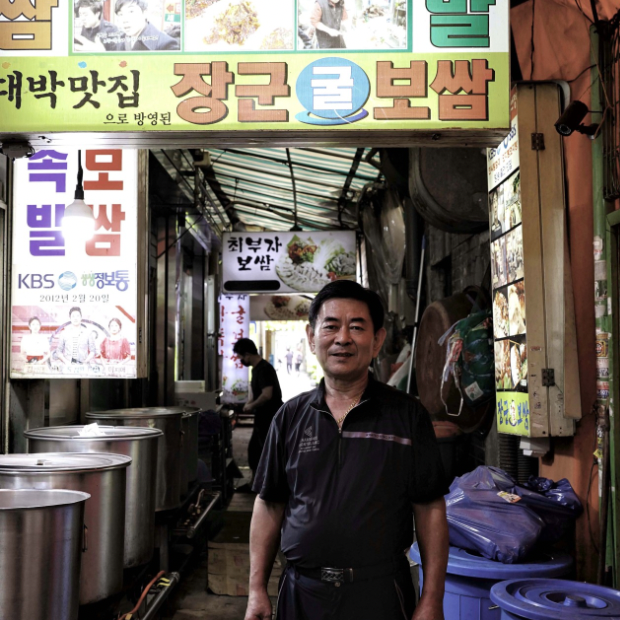
“Janggun Gul bossam” is a renowned bossam (boiled pork belly) restaurant famous for its oyster wraps. With a history of 30 years and featured on television, it is located in Jongno-gu, Seoul. Situated in what is known as the “Bossam Alley,” where numerous bossam restaurants thrive, this establishment stands out for its specialty in oyster wraps.
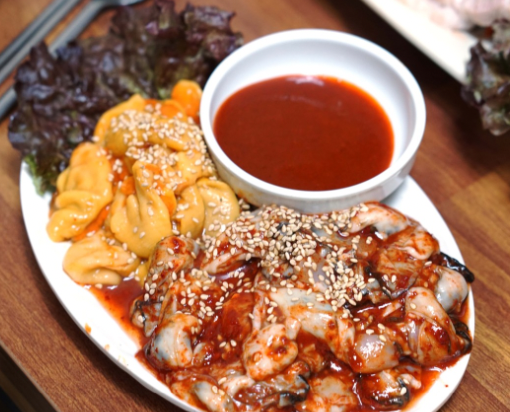
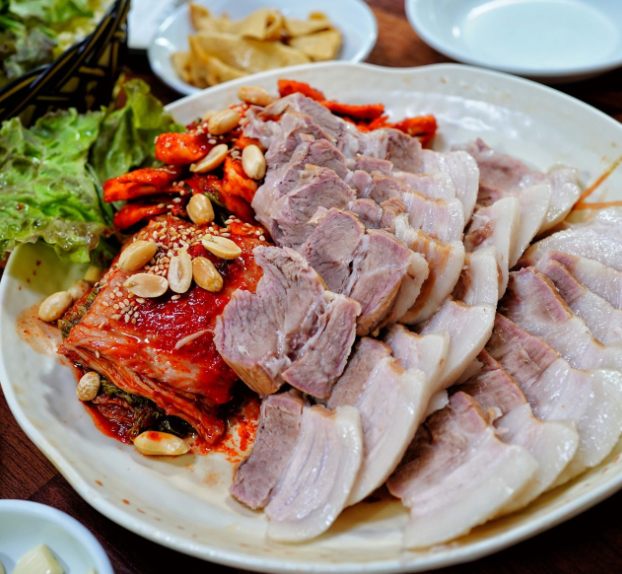
When you order bossam here, you’ll receive complimentary gamjatang (spicy potato meet soup) and stir-fried squid, which perfectly complement the oyster wraps. Located in the heart of the bossam alley, this restaurant is always bustling with people drawn by its generous portions and excellent flavors. Additionally, thanks to the friendly and entertaining owner, dining here is a delightful experience. With its convenient location and delicious offerings, including not only oyster wraps but also traditional bossam, it’s highly recommended to pay a visit at least once.
🚩 Location
22, Supyo-ro 20-gil, Jongno-gu, Seoul (Go to Google map)
2. Bada Hoe Sarang (Bangeo Hoe)
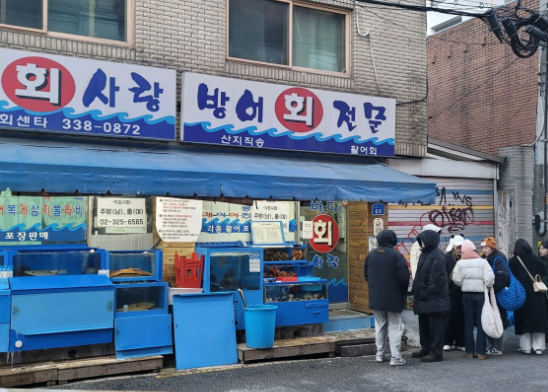
“Bada Hoe Sarang” is a specialized restaurant renowned for its amberjack sashimi, with some patrons waiting up to a year for a chance to dine here. The lines here are relentless from opening until closing, with patrons often having to wait at least 30 minutes just to get in. (Waiting outside for 30 minutes on a cold day is no easy feat…🥶). However, one can be certain that the wait is well worth it!
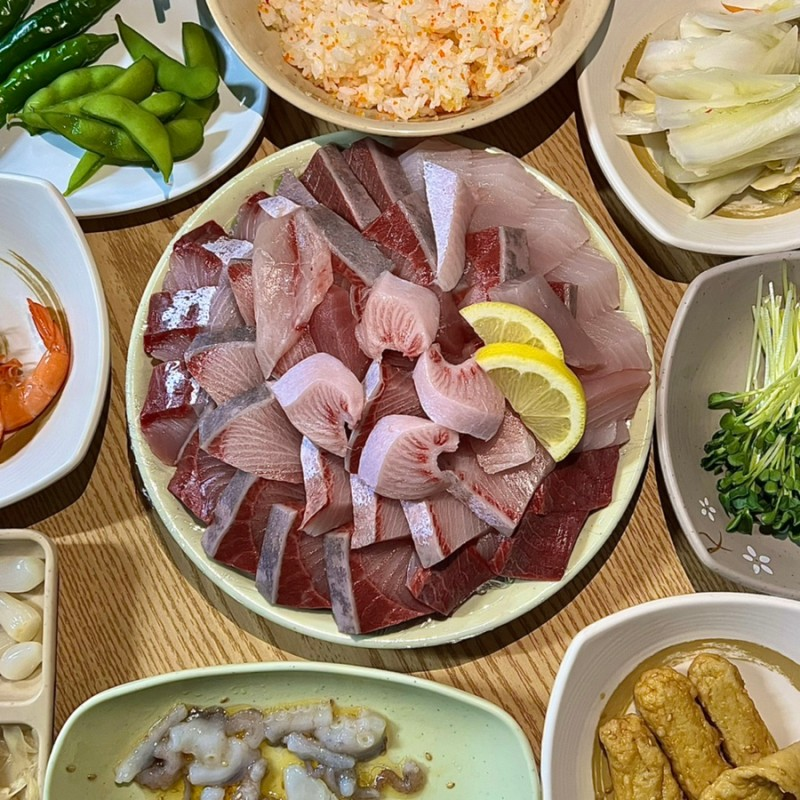
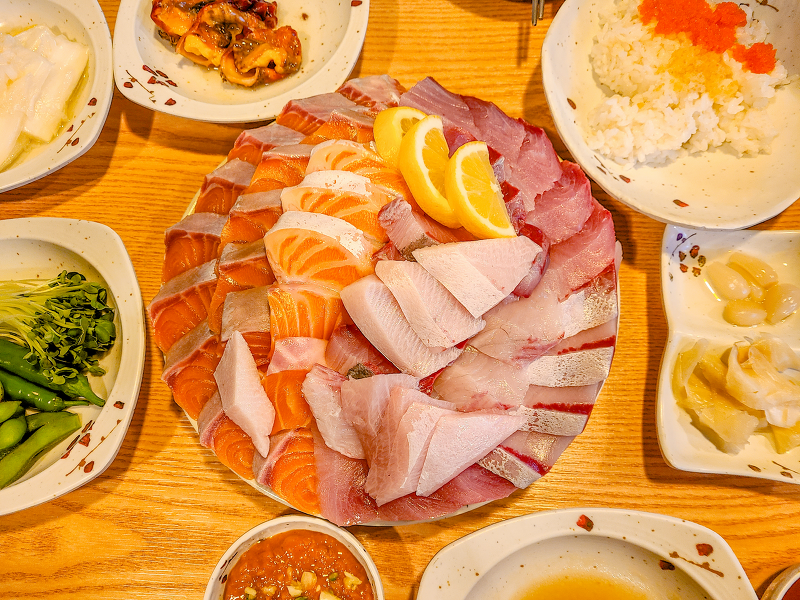
Despite the addition of a second branch due to its immense popularity, the waiting time hasn’t improved in the slightest. There are two locations near Hongdae in Seoul, and since the taste is consistent across both, it’s best to visit the one closest to you. What sets this place apart is their practice of slicing the incredibly fresh and plump amberjack thick right on the spot. The owner ensures that the fish is cleaned impeccably, and with the high turnover rate, you can always count on enjoying fresh amberjack sashimi here.
If you’re looking for a variety, consider ordering the Bangeo (amberjack) and Salmon combo menu, as indulging in just amberjack may leave you wanting more; the salmon also melts in your mouth.
🚩 Location
3. Yeonan Sikdang (Kkomak)
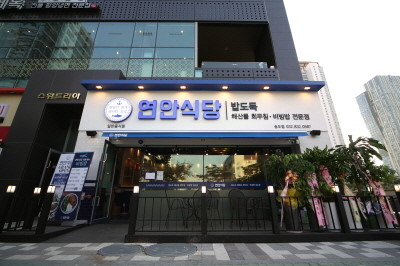
If you find yourself craving the fresh flavors of typical seafood dishes you’ve tasted along the seaside, don’t hesitate to visit “Yeonan Sikdang”. This longstanding seafood restaurant in Seoul specializes in kkomak(cockles) dishes and has gained so much popularity that it has quickly expanded with chain outlets across Seoul.
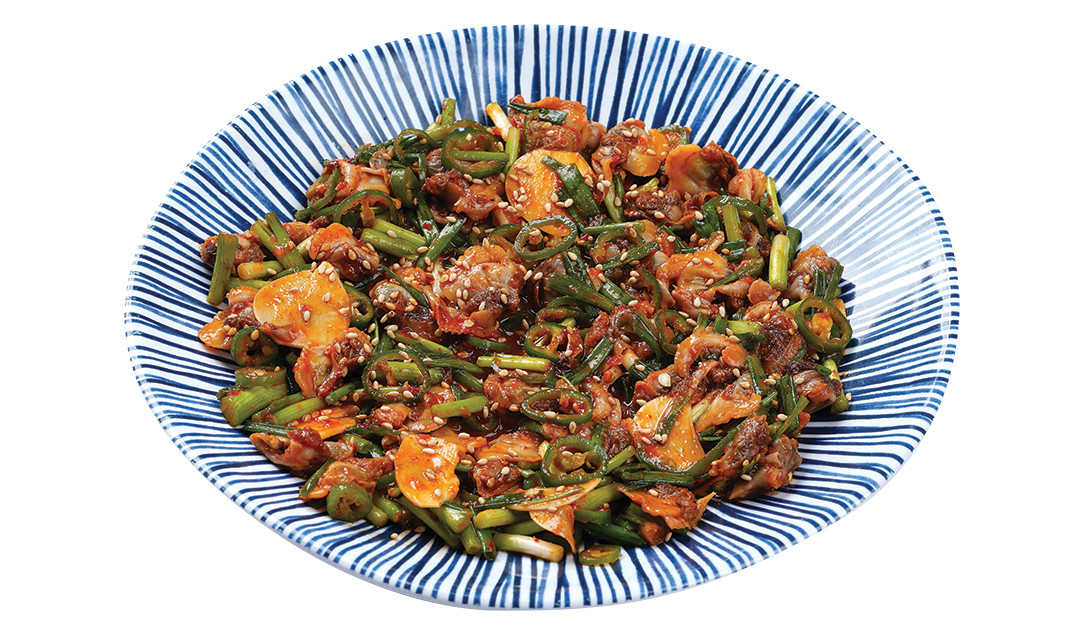
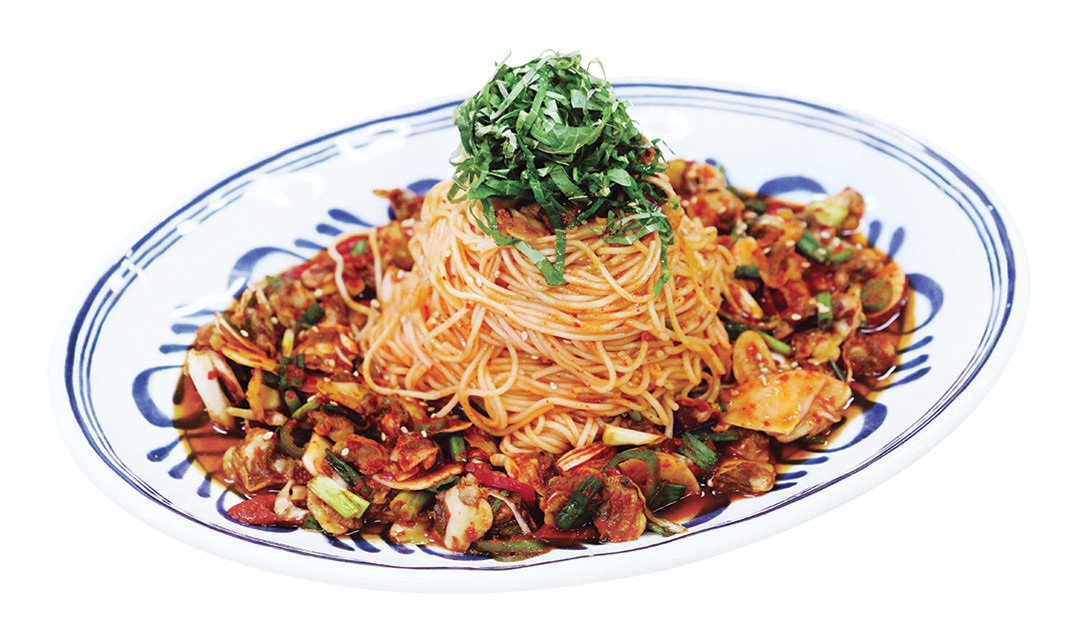
The signature dishes at Yeonan Sikdang are “Kkomak bibimbap” and “”Kkomak muchim”. When a generous plate of cockles is served, simply layer it over rice and sprinkle some fragrant sesame oil provided at each table, then mix it well to experience an unforgettable taste that will surely have you coming back for more. Additionally, the “Kkomak muchim” here is served with boiled somen noodles, a unique twist that enhances the flavor profile. When mixed thoroughly with the seasoning and noodles, it becomes an unparalleled drinking snack.
While Yeonan Sikdang offers various seafood dishes besides cockles, be sure to try the cockle dishes first before exploring the rest of the menu.
🚩 Location
- B1F, Hapjeong Mecenapolis, 45, Yanghwa-ro, Mapo-gu, Seoul (👉Google Map)
- B1F of Grand Seoul Building, 33 Jongno-gu, Jongno-gu, Seoul (👉Google Map)
🔥Recommend🔥
Seoul’s Top 3 Yukhoe(ユッケ) Restaurants in Gwangjang Market (Myeongdong)
Gwangjang Market, located in the heart of Seoul, is renowned for its delicious traditional Korean food such as ‘Yukhoe(ユッケ) ‘
